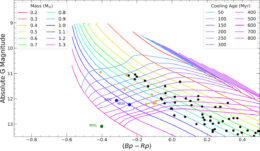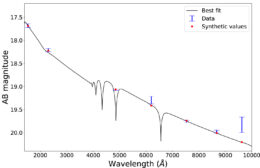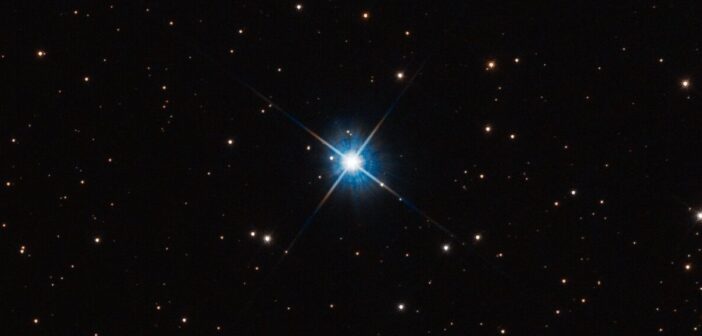Studying the highest-mass white dwarfs is key to drawing the line between stars that explode as supernovae and stars that live out their days as white dwarfs. It’s easiest to determine the ages and masses of white dwarfs in star clusters, but many clusters seem to be missing their white dwarfs — can researchers track down a massive white dwarf that once belonged to a nearby cluster?
Kicked Out of a Cluster
Many stars are born in star clusters, but they may not remain there; just as children leave home, so too do stars depart their natal clusters — though children aren’t usually ejected via gravitational interactions. Researchers suspect that gravitational kicks may explain why many star clusters are missing their white dwarfs, the exposed cores of low- to intermediate-mass stars.

The main stellar evolution pathways. It’s not yet clear exactly which stars explode as supernovae and which become white dwarfs. Click to enlarge. [ESA]
A Search for High-Mass White Dwarfs
To probe the line between stars that become supernovae and stars that become white dwarfs, David Miller (University of British Columbia) and collaborators conducted a search for high-mass white dwarfs associated with the nearby Hyades star cluster. Using precise position and velocity data from the Gaia spacecraft, the team identified stars moving in the same direction as the cluster and traveling on a path that places the star within the cluster during the cluster’s lifetime.

Color–magnitude diagram showing the full sample of white-dwarf candidates with the three leading candidates labeled. Click to enlarge. [Miller et al. 2023]
Placing Constraints

Best-fit synthetic spectrum (black line) with synthetic photometry (red circles) and data (blue error bars). Click to enlarge. [Adapted from Miller et al. 2023]
Model fitting indicates that the white dwarf has been cooling for 556 million years. With the age of the Hyades cluster still uncertain, though, Miller’s team could only loosely constrain the progenitor star’s mass to >7.5 solar masses and its lifetime to <40 million years. The existence of this massive white dwarf can instead be used to constrain the cluster’s age, limiting it to <606 million years.
Miller and coauthors note that there’s nothing exceptional about the Hyades cluster except its proximity; this suggests that similarly massive white dwarfs may be more common than expected, waiting to be discovered.
Citation
“An Extremely Massive White Dwarf Escaped from the Hyades Star Cluster,” David R. Miller et al 2023 ApJL 956 L41. doi:10.3847/2041-8213/acffc4
